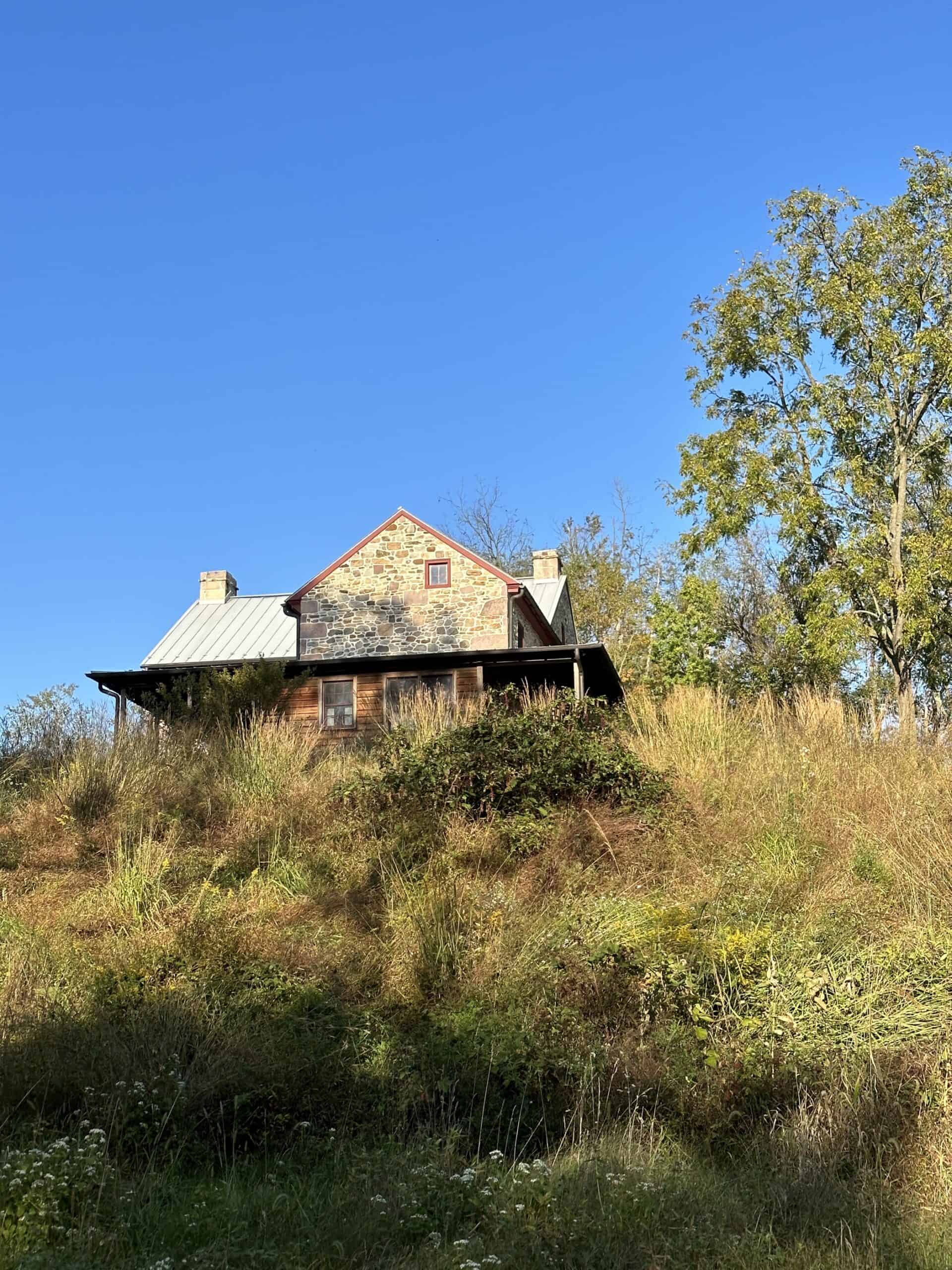Crow’s Nest: Avoiding the lawn
By Daniel Barringer, Preserve Manager.
We have plenty of lawn here, more than I’d like, but we do maintain turf for program spaces, trails, septic system drain fields, and some areas around buildings here. It’s easy to walk on, is generally attractive, and we manage ours as “freedom lawns”—maintained with a very high threshold of tolerance for weeds so that we don’t need to go to unnecessary effort to get rid of them. But mowing is also tiring, fossil-fuel intensive, noisy and polluting, so we try to minimize how often and how large an area we have to do it.
So in those places were we still want to maintain an open view without trees too close to a building, for example, we substitute meadows for lawns. Pictured below is the Jacob house at Crow’s Nest, perched on a hill that is the best sledding slope (best downhill reward for uphill effort) in the neighborhood. As you might guess, a hill that is steep enough for good sledding is not great for mowing, so we’re not going to do it often. Instead we let it grow up as a natural meadow, and now it has many native species that we have added to over time. Native warm-season grasses, goldenrods, coneflowers, pokeweed, and others have taken up residence here. They stabilize the soil, add to local plant diversity, and offer habitat for pollinators.

Photo: Daniel Barringer
Despite what it looks like from this view, the meadow doesn’t go all the way up to the house. A small lawn space perches at the top of the hill and is mowed weekly during the spring and summer. Normally we mow meadows once a year in late winter, but since we go sledding here, I have to mow this in the late fall before it snows. I’ll miss the colors and textures of the meadow, but fortunately it will be back next year.
